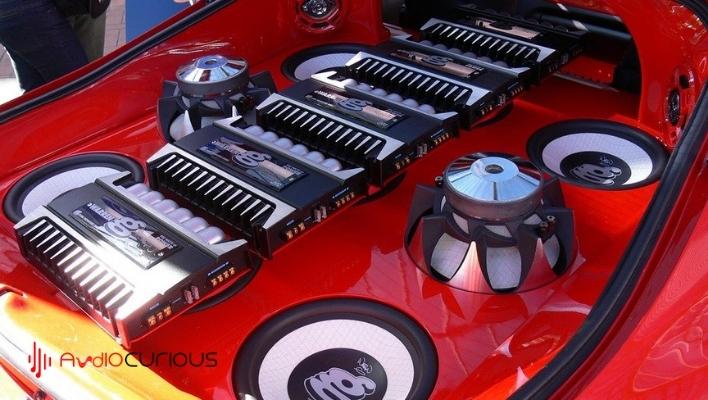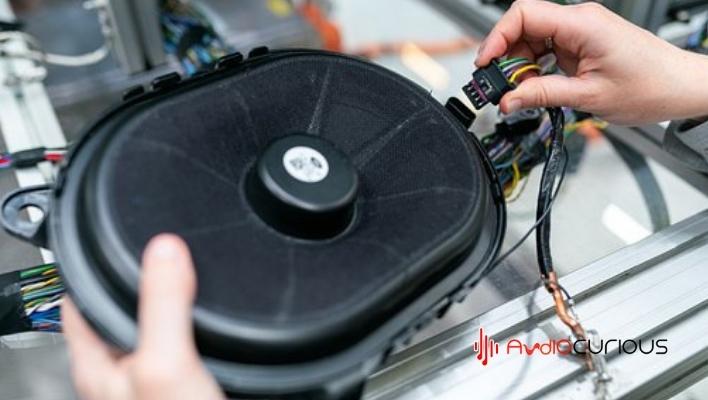According to Fortune Business Insights, the demand for car audio systems is expected to hit $ 13.52 Billion, up from the current $ 8.82 Billion. These stats explain the unending release of premium car entertainment systems to meet the ever-growing demand.
With entertainment and comfort being the leading needs for every car owner, the focus has shifted from a head unit that offers controls to tweak the sound to one with more advanced features. Bluetooth capability, hands-free calling, GPS navigation, CD & DVD players, and multiple input options, just to mention a few.
In this article, we will have an in-depth understanding of a car audio system, its components, the installation process, and the common FAQs you may encounter. So let’s delve right into it.
What Is a Car Audio System?
A car audio system is a combination of speakers, amplifiers, and other electronic components installed in your vehicle to provide you with the best sound experience. The materials used in constructing these components are different for each manufacturer and model. However, they still serve a common goal—to provide you with the best possible sound quality while providing enough power to produce loud sounds.
To get started, you’ll need to understand the different components of a car audio system. The most important part is the stereo, which will play all your favorite songs from your smartphone, MP3, or CD. Other components include speakers, amplifiers, and subwoofers. So let’s get started!
Speakers

A speaker is a device that converts electrical energy from the battery and other devices into sound waves so that you can hear it through your car speakers. Most modern cars have built-in hands-free technology that allows you to make phone calls directly from your car’s built-in speaker system.
Every car features two types of speakers: coaxial and component speakers. Coaxial speakers are mostly factory-installed speakers that consist of subwoofers, woofers, and tweeters, all built into one part. Component speakers are aftermarket speakers that feature subs, woofers, and tweeters in separate parts, plus a crossover network to direct sound frequencies to the right speaker. We’ll discuss more on crossovers shortly.
Amplifier
An equalizer allows you to adjust certain frequencies in your system, so they sound right for you. There are many different equalizers, but most people use a graphic equalizer. This type of equalizer has sliders that you can move to control the volume of specific frequencies. For example, if your music sounds too “bassy” or muffled, you can use a graphic equalizer to adjust it to more precise sounds.
There are many different types of amplifiers that you can find in car audio systems. The main types are:
- Class A/B amplifiers: These are the most common type of amplifier and provide the highest power output. You can use them to power speakers, subwoofers, and other components of the car’s audio system. The drawback is that they require a high amount of current to run, which can lead to overheating if too much heat is produced.
- Class D amplifiers: These amps use an electronic switch instead of transistors to control the current flow from the battery to the speakers or other components. They use less energy than conventional amps and produce lower heat levels as well because they do not need to dissipate as much heat through transistors or resistors when switched on.
Crossover
A crossover separates the frequencies of high and low-impedance speakers, allowing them to play sounds at different volumes. This can make it possible to blend different types of music in ways that would be impossible with the same kind of equipment but without a crossover.
Crossovers help you transition smoothly between different music genres or even just different instruments within a single genre. Crossovers can also help you create more powerful bass tones. As an integral part of any car audio system, crossovers should be considered when planning your budget for upgrade options.
If your car has a built-in amplifier and speaker system, you may not need to set a crossover frequency. You can simply plug in your favorite songs and listen to them without worrying whether they sound muffled. However, if you’re installing an aftermarket system, you will have to set the crossover frequency based on the specifications for that particular model.
Firstly, check the specs for each pair of speakers to ensure they are compatible with your system. You should also consider the type of music you listen to and what kind of system you have. For example, if you’re a big fan of hip-hop or techno music, your ideal crossover frequency will probably be higher than someone who listens exclusively to classic rock.
Expert tip: Set the crossover frequency lower if you prefer listening at lower volumes and want more detail in your sound.
Car Stereo
A car stereo is one of the essential parts of the car audio system, as it plays music you can listen to while driving. It also has a built-in amplifier and other unique features that you can use with other devices, such as playing music from a smartphone using Bluetooth connectivity. All you need is a budget and a plan to upgrade your car stereo.
The head unit may also have an in-dash GPS navigation system that lets you quickly pinpoint your destination and navigate. It may also include auxiliary inputs to plug in other devices like an MP3 player or CD player.

Choosing the Best Car Audio System
If you’re looking for a car audio system, you’ve probably already narrowed your options to two or three different brands. But what are the factors that should be considered when choosing your preferred brand? Well, here’s our list of top considerations:
- Cost-wise: You mustn’t get stuck with an expensive system just because it looks fancy. If you can afford it, go ahead and buy the best one, but remember, there’s no reason to spend more than necessary on an upgrade.
- Music Preference: Your tastes might be different than someone else’s, so it’s essential to ensure that whatever vehicle audio system you choose will work with the kind of music you like. If your favorite band plays heavy metal, but no one else does, it’s not worth installing an expensive system just for them!
- Expected Volume levels: If you’re playing music at low volumes, make sure that the speakers in your car can handle lower frequencies without distorting or losing quality. For a good balance between bass and treble, look for audio systems with a subwoofer or woofers that can be adjusted or replaced.
- Available vehicle space: If you have limited space, choosing a system that occupies as little of your cargo area as possible is best. You don’t want to use up valuable cargo space by installing something that takes up too much room in your trunk!
- Compatibility: You’ll want to ensure that the system is compatible with your vehicle. Ensure the system will work with your car’s speakers and wiring and your phone or other devices that may use Bluetooth or AUX inputs.
- Ease of Installation: If you’re looking to install your new system yourself, you’ll want to look for audio systems that are easy to install with a great fit and finish. They should also be easy enough to use so that the time spent installing is well spent. If you’re uncomfortable with this installation, you may want to consult an expert who can help you.
How to Install Your Car Audio System

You don’t have to be a professional to create a great sound system! Follow these simple steps!
- Ensure your car is turned off and the parking brake is set.
- Locate the speakers in the trunk and unscrew them from their locations. You’ll have to be careful not to damage any wires or connections during this process, so make sure you use caution!
- Unscrew all of the screws on your speakers, then take them out of their boxes. This will allow you to reuse them if you need to later!
- Disconnect both ends of each wire from your speakers to your amplifier—this will prevent any electrical sparks or messes while you’re working on it!
- Run wires from each speaker into its corresponding connection port to connect it with its corresponding amplifier port on your amplifier. If there isn’t an appropriate port available in this area, feel free to run a wire directly into one end of the speaker’s output jack instead! Ensure everything is securely connected before turning on the amplifier and playing music through your system. This will ensure that there are no loose connections or leaks!
- If you want a subwoofer to add those punchy lows, feel free to connect its output jack to one of the available ports on your amplifier or simply run a wire directly into it.
Common FAQs
If you’re having trouble with your car audio system, there are a few things you can try to get it working correctly.
The sound quality is terrible, but I can’t figure out what happened!
Try reinstalling the software that comes with your device so that you can reset everything back to default settings and see if it makes a difference in your sound quality. If this fails, try replacing parts until you find one that works!
There’s a loud buzzing noise coming from the speakers.
It is often caused by a loose connection in the speaker wires. Make sure everything’s plugged in securely!
The bass isn’t as punchy as expected.
Make sure your subwoofer is sitting right on top of your seat, and there are no obstructions between your subwoofer and the rest of your car.
Conclusion
Having an average-performing car entertainment system is unacceptable, given the numerous options available in the audio market today. If you are an audiophile with bigger budgets to work with, don’t shy away from choosing a beast that gives your car a room-filling effect.
The stereo may promise stellar performance and affordable, but it may be irrelevant if it fails to fit in your dash. Always check if it’s single or double DIN. And the beauty of all this is that you can install the car audio system yourself!
Still, having a problem with your car audio system? Send us your views in the comment section below.
